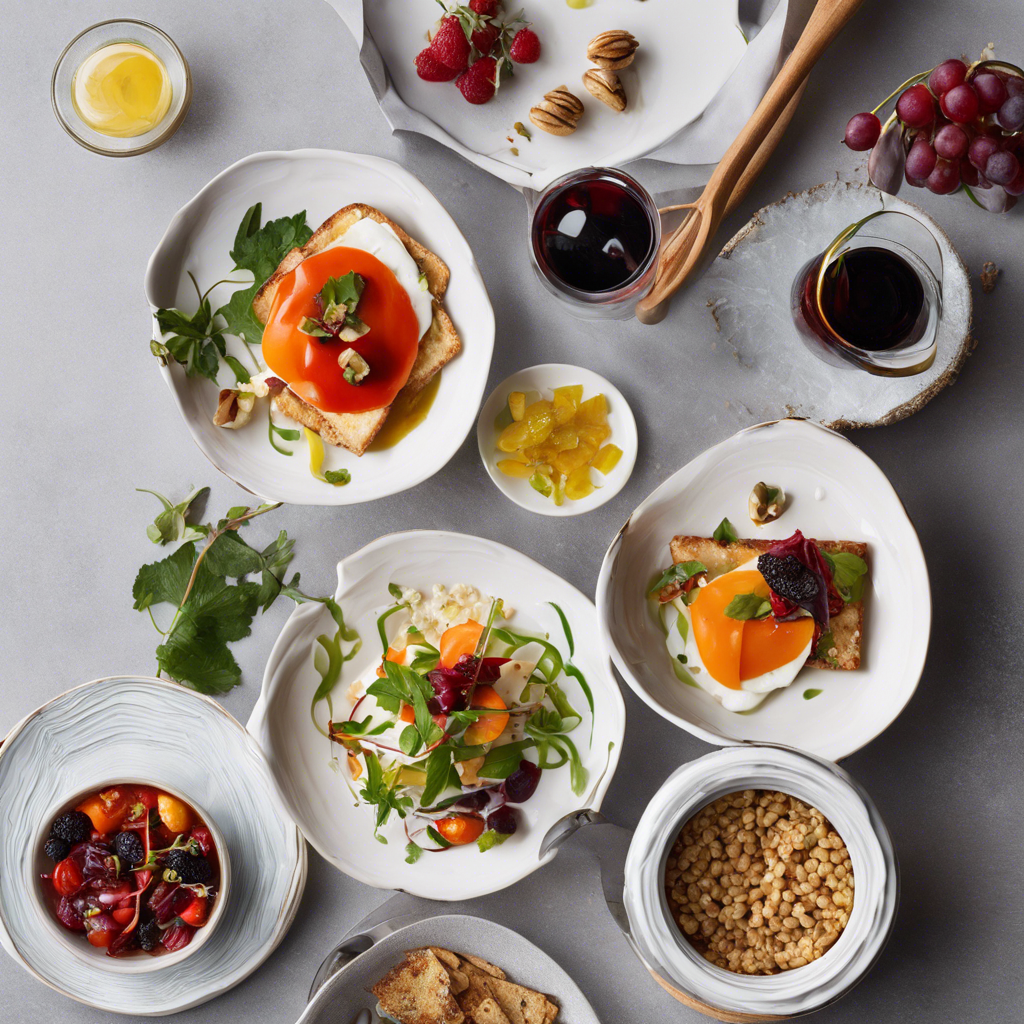Food pairing is an art that can elevate your dining experience, taking your meals from mundane to magnificent. It’s about creating harmonious combinations that excite and delight your palate, bringing a whole new level of sophistication and enjoyment to your table. The key to mastering this art lies in understanding the fundamental principles of taste and how different flavors interact with each other. It is an exciting journey that promises to make every meal a memorable one.
The foundation of successful food pairing lies in recognizing the basic taste profiles: sweet, salty, sour, bitter, and umami. Each flavor has its unique characteristics and interacts differently with other flavors. For instance, sweet and salty combinations often result in a delicious harmony, as seen in the classic pairing of caramel and sea salt. Similarly, the tangy punch of sour flavors can be balanced by the earthy notes of bitterness, like in the case of lemon and olive oil. Understanding these dynamics opens up a world of creative possibilities in the kitchen.
Texture plays a pivotal role in food pairing as well. The interplay between soft and crunchy, creamy and crispy, adds an extra layer of enjoyment to a dish. Imagine the satisfaction of biting into a crisp apple slice paired with a creamy cheddar cheese, or the contrast of tender braised beef against the crunch of a fresh garden salad. These textural surprises engage the senses and create a multi-dimensional dining experience. It keeps things exciting and ensures that every bite offers something new to discover.
Arousing the senses is an important aspect of masterful food pairing. The look, aroma, and taste of a dish should all work together to create a symphony of flavors. Consider the allure of a vibrant plate, where colorful ingredients entice the eyes, stimulating the appetite before the first bite is even taken. The aroma of a dish, whether it’s the fragrance of freshly chopped herbs or the smoky notes from grilled meats, also sets the stage for a delightful dining journey. Together with taste, these elements create a multi-sensory experience that leaves a lasting impression.
Experimenting with different combinations is essential to becoming a food pairing aficionado. This could mean trying unconventional pairings, like chocolate with chili peppers or strawberry and basil, to discover unexpected delights. Exploring diverse cuisines is also a great way to learn how different cultures have traditionally paired flavors and textures, offering a wealth of inspiration. By embracing experimentation, you’ll find yourself crafting meals that are truly extraordinary.
Additionally, understanding the role of condiments and accompaniments is crucial in food pairing. These elements can make or break a dish, providing balance or contrast to the main components. Consider the zesty lift that a squeeze of lemon can give to seafood or how a drizzle of honey can temper the heat of spicy dishes. Accompaniments like sauces, dips, and chutneys also provide opportunities for creative pairings; think of the cool refreshment that a mint chutney brings to a spicy curry or the creamy tang of a tzatziki sauce paired with grilled vegetables. These small additions are the details that set apart a masterful food pairing from the mundane.
When it comes to drinks, the same principles of harmony and contrast apply. The right beverage can either complement or contrast with the flavors in a dish, enhancing the overall dining experience. Wine, for instance, offers a diverse range of styles, from crisp and dry whites to bold and fruity reds, each capable of accentuating different flavors in a meal. But one needn’t stop at wine – the exploration of craft beers, ciders, and cocktails also opens up a myriad of pairing possibilities. Imagine the refreshment of a crisp lager with a juicy burger or the way a complex whiskey can enhance the flavors in a rich, cheesy fondue. Drinks provide another dimension to food pairing, promising to take your meals to new heights.
Lastly, presentation is key to elevating the meal experience. It’s not just about the food itself, but the entire theatre of dining. From the moment the dishes are assembled to the final flourish of a garnish, presentation captures the attention and sets the stage for a memorable meal. This could mean artfully arranging dishes on a plate to create visual appeal or adding height with stacked ingredients for a sense of drama. Even something as simple as a well-placed sprig of herbs can transform a dish from ordinary to extraordinary. Paying attention to these details showcases your craftsmanship and ensures that your guests are in for a treat, even before they take their first bite.
